Setting up EU taxes
ParagonERP has a setting to calculate VAT for EU-based countries to support automatic VAT calculation by location, item, or company. This feature flag needs to be switched on in MyCompany.

Tax attributes setup

VAT codes


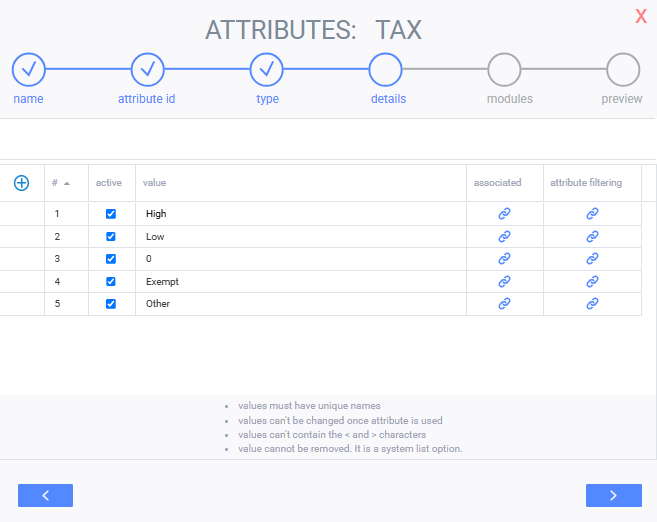

VAT applicable codes

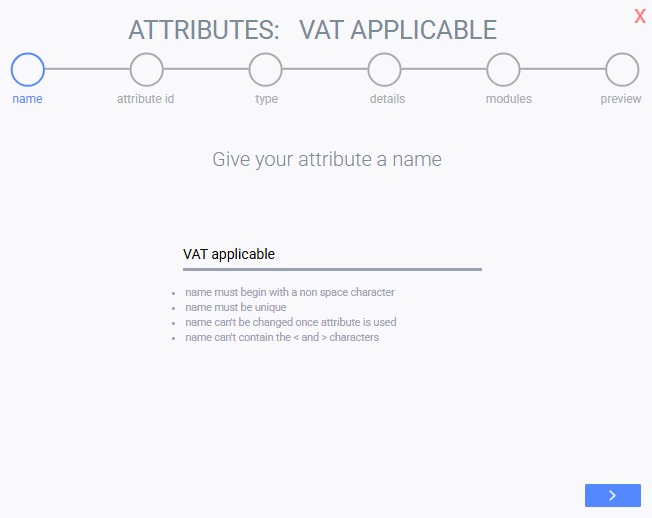
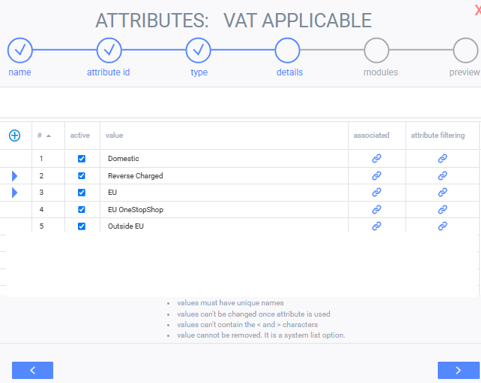
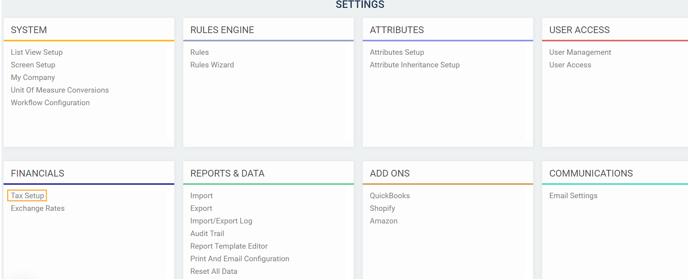



Mandatory fields are marked with a red asterisk (*) and must be filled before saving.
- tax code - Select the tax code that is being used.
- type - Select the type of tax that is being used.
- Always enter the standard VAT (normally High) rates with tax code location.
- All other VAT rates will be setup as item tax.
- rate - Enter the tax percentage.
- from country and to country - Select the ship from and ship to country.
Customer setup
The applicable tax regime and the customer VAT number must be set on each customer:

Product setup
- The tax code must be set on products in the product module.
Product setup - OneStopShop exception


Vat calculation
- If customer VAT applicable is in (" ", "domestic"), use the product VAT code to select Tax rate from Tax setup table with ship from country and ship to country of the order.
- If customer VAT applicable in ("Reverse charged", "outside EU"), set Tax rate = 0%
- If customer VAT applicable is "EU" and the customer has a VAT Number, set Tax rate = 0%
- If customer VAT applicable is "EU OneStopShop", use the product VAT code to select rate from Tax setup table with ship from country and ship to country of the order. If a tax association exists on the order, this VAT code supersedes the Product VAT code.
Import and export your tax setup
Instead of making changes or adding configuration manually, you can easily import your tax setup automatically using the import/export tool. All tax validations that exist when entering new rates manually also apply when importing them.
To access the import and export functions, click the settings button from any screen.
Import and export are found under the reports & data card.
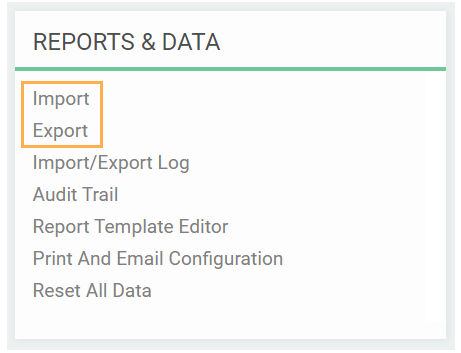
Click on export and select tax setup from the drop-down:
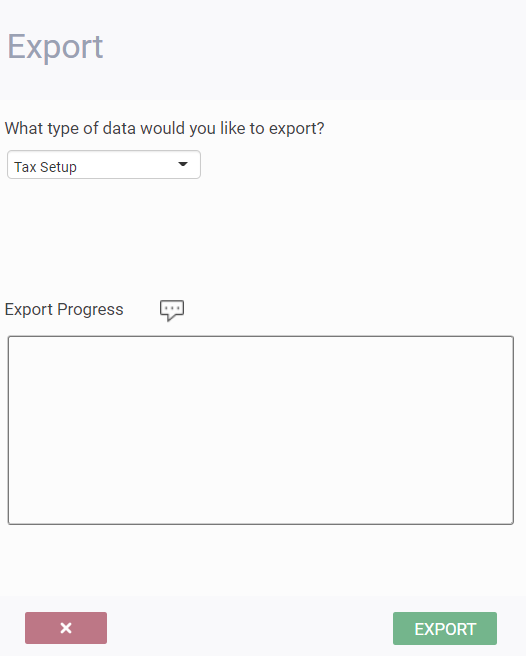
Click the export button and Paragon will export your data into a spreadsheet format. All of the fields that are configured on the tax setup screen will appear as columns in your Excel sheet.

If you want to add a new line to the tax setup instead of updating an existing line, leave the line number blank for that row.
After you have made your changes and/or added new taxes, you can import the file into Paragon.
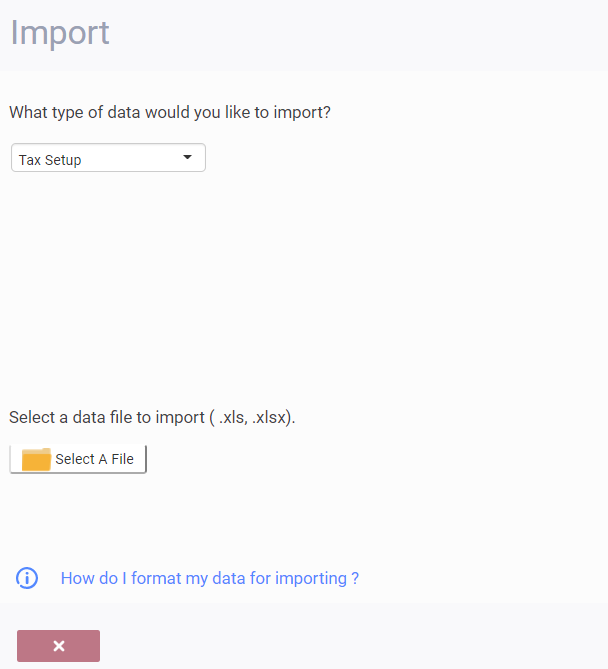
Automatic Tax applied on Financial Transactions
- Scenario 1 - Taxes based on Location
- create a financial transaction
- select a company that is not set as EU or reverse charged
- enter an item with no item tax in either the summary screen or item associations
- make sure taxes are as expected, e.g., based on location - tax setup should have an entry for location for the from and to country
- Scenario 2 - Item Tax from Product Summary Tab
- enter an item with an item tax in the summary screen and association but with an address whose country is not in the association
- tax on transaction should be based on the item in the item summary form
- Scenario 3 - Item Tax from Associations
- Create a financial transaction with country included in association
- rate should be based on item tax in association
- Scenario 4 - Tax is 0
- set the transaction to a company that has a 0% company tax rate because vat applicable = 'eu'
- tax should be 0
- Scenario 5 - country has a specific attribute set as an association on a country:
In Spain, the Canary Islands do not use VAT. Tax should be 0 for the Canary Islands. To prevent you from having to make an entry for every region, an association is added in attribute setup for the country Spain. The association is: Region Tax Override ( Regionale Belastingoverschrijving).
In the associated tab of the Country code for Spain, you set the region(s) that should follow the exception.



What's next?
Now that your taxes are set up, you can create transactions and have all of the taxes automatically calculated. Here are some other handy configuration articles that you may find useful:
![paragon logo-1.png]](https://support.paragon-erp.com/hs-fs/hubfs/paragon%20logo-1.png?height=50&name=paragon%20logo-1.png)